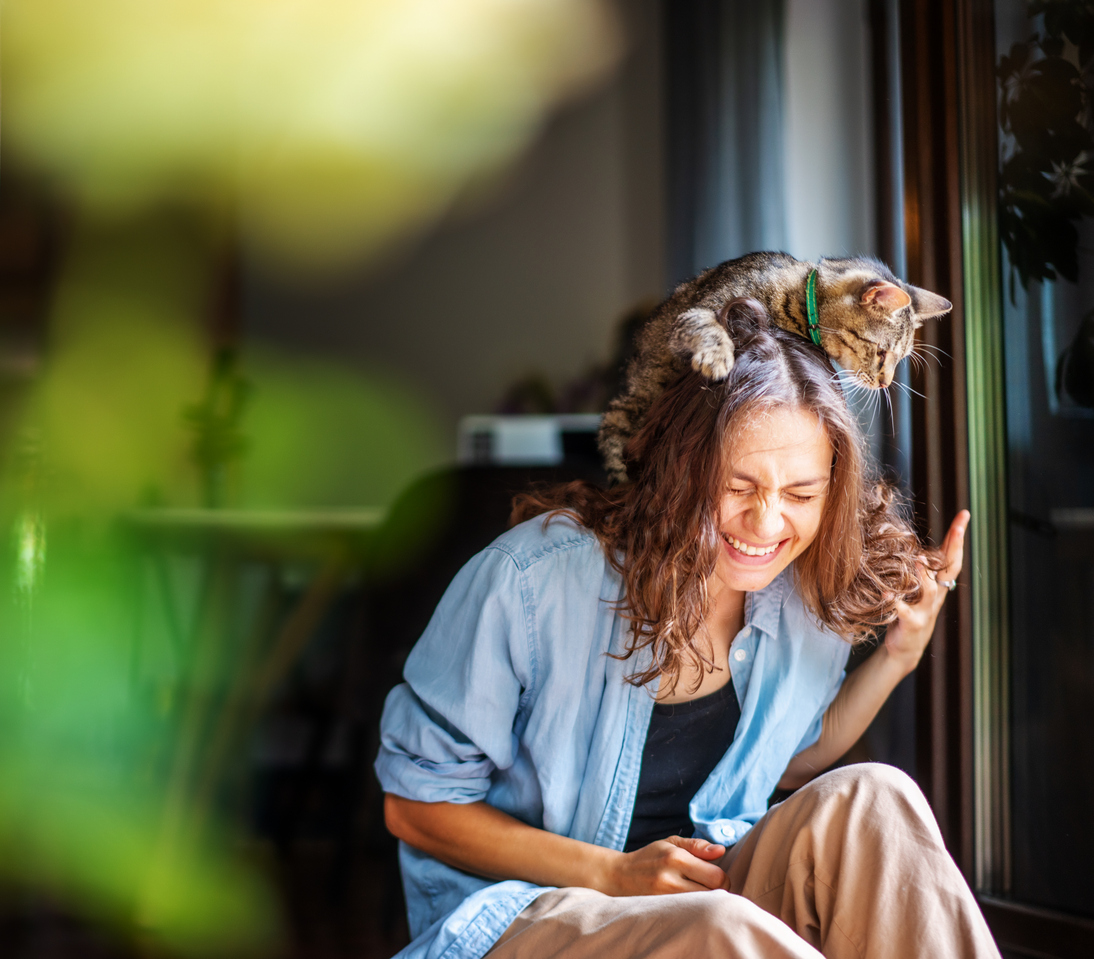Cats are independent, curious creatures with unique personalities. While they might not show affection like dogs, bonding with your cat is possible and deeply rewarding. In this article, we explore how to build a strong and meaningful connection with your feline companion through practical techniques, understanding behavior, and patience.
Understanding Cat Behavior: The Foundation of Bonding
Cats communicate differently from humans, and understanding their body language and natural instincts is essential for building trust. Cats are territorial animals, often cautious about their environment. Recognizing the subtle cues they give will help you respond in a way that makes them feel safe.
Key Signals in Cat Body Language
- Purring: This usually signifies contentment but can also be a way to self-soothe when anxious.
- Slow Blinking: A cat’s way of showing trust and affection.
- Tail Position: An upright tail with a slight curve at the tip signals friendliness, while a puffed-up tail may indicate fear.
- Ears and Whiskers: Ears forward means curiosity or interest, while flat ears signal aggression or fear. Whiskers pointed forward usually indicate excitement, while whiskers pulled back can show discomfort.
Creating a Safe Space for Your Cat
Cats are sensitive to their surroundings. Ensuring that your home is a stress-free environment can make your cat feel more comfortable, which is crucial for bonding.
Steps to Make Your Home Cat-Friendly
- Vertical Space: Cats love climbing and watching their surroundings from a height. Providing shelves or cat trees can enhance their sense of security.
- Quiet Zones: Ensure your cat has access to a quiet area where they can retreat if they feel overwhelmed.
- Consistent Routine: Cats thrive on routine. Feeding them at the same time each day can help build trust and security.
Playtime: The Gateway to Bonding
Play is an essential aspect of a cat’s life, satisfying their hunting instincts and keeping them physically active. Regular, interactive play not only helps your cat stay healthy but also strengthens the bond between the two of you.
Interactive Toys That Enhance Bonding
- Feather Wands: Mimic prey and encourage your cat to stalk, pounce, and chase.
- Laser Pointers: Cats love chasing the elusive red dot, though it’s essential to give them a physical toy to “catch” at the end.
- Puzzle Toys: Stimulate your cat mentally and provide a rewarding challenge.
Set aside time each day for focused play. This routine not only provides physical activity but also reinforces the idea that you are a source of fun and positive experiences.
Positive Reinforcement: Building Trust Through Rewards
Positive reinforcement is a proven method for encouraging good behavior in cats. Rewarding your cat with treats, affection, or play when they exhibit positive behaviors will help them associate those actions with a good outcome.
Methods of Positive Reinforcement
- Treat-Based Training: Use small, high-reward treats to encourage desired behavior. This could be as simple as coming to you when called or sitting calmly in your presence.
- Affection as a Reward: Not all cats respond to treats; some may prefer petting or a soft, calming voice.
- Clicker Training: Combine the sound of a clicker with rewards to reinforce behaviors like using the litter box, sitting on command, or walking on a leash.
Physical Affection: Knowing Your Cat’s Boundaries
Unlike dogs, cats have a wide range of preferences when it comes to physical affection. Some cats love being held and petted, while others prefer minimal touch. Learning how your cat likes to be petted is key to building trust.
Areas Cats Usually Enjoy Being Petted
- Cheeks: Many cats love cheek scratches, as they have scent glands here and enjoy marking you as “theirs.”
- Under the Chin: Gentle chin rubs are often a favorite.
- Base of the Tail: Some cats enjoy a good scratch at the base of their tail, while others might find it overstimulating.
Avoid forcing physical affection. Pay attention to your cat’s body language, and let them initiate the contact when they’re comfortable.
Creating Routine and Consistency
Cats are creatures of habit, and they feel more secure when they know what to expect from their environment and interactions. A predictable routine can significantly improve your bond.
Tips for Creating a Consistent Routine
- Feeding at the Same Time Daily: Scheduled feeding helps your cat feel secure and anticipate their next meal.
- Regular Play Sessions: Engage in play at the same time each day to create a predictable and fun routine.
- Consistent Affection: Pay attention to your cat’s affection needs—whether it’s cuddling at night or a gentle pet in the morning.
Conclusion: Building a Strong, Lasting Bond with Your Cat
Bonding with your cat is a journey that requires patience, understanding, and time. By creating a safe environment, engaging in regular play, offering positive reinforcement, and respecting their boundaries, you can develop a meaningful and lasting relationship. Each cat is unique, and tailoring your approach to their personality will help foster a deep bond built on trust and love.
Yours in Paws,
The PawPaw Team.

